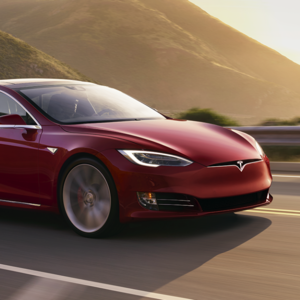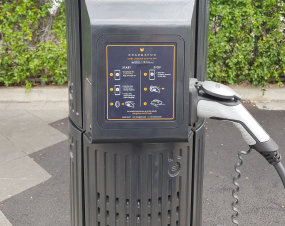Electric vehicle technology is rapidly advancing, but big batteries and falling prices aren’t the only things bringing people onboard. Self-driving technology has already made its way into a number of today’s EVs. So what exactly can they do? And what are the 5 ‘levels’ of autonomous vehicles we keep reading about?

Image courtesy of SmoothGroover22 on Flickr
SAE of the union
The SAE (short for Society of Automotive Engineers) is a US-based organisation responsible for many of the standards and practises adopted by the automotive industry worldwide. In 2014 they published the descriptively-named “Taxonomy and Definitions for Terms Related to Driving Automation Systems for On-Road Motor Vehicles” or J3016, which defined 6 levels of automation for vehicles; level 0 for full human control to level 5 for full self-driving.
Despite the fact that nobody outside the industry understood these levels, they’ve become the unofficial standard used by automakers to describe the automated driving ability of their vehicles. You might have seen them referenced in reviews and descriptions for many EVs today. A Tesla Model 3, using the currently-available Autopilot system, functions at level 2.
There’s nothing specifically about autonomous driving technology that requires an EV to run; it can and has been applied to combustion cars available today. That said, there is an instinctive synergy between the technologies that lends them to coming together. Tesla offers Autopilot, the 2018 Nissan Leaf uses their ProPilot system, and many of the EV concepts on display at the Shanghai Auto Show are spruiking advanced autonomous driving tech. So if autonomous driving is destined to forever accompany EVs, we’d best understand the lingo associated with it.
A level of understanding
The full description of the SAE’s levelling system is available online, but its 35 pages of jargon hardly make for a reader-friendly document. Put simply, the levels operate as follows:
Level 0: no driving automation
This is the level of most cars you’ve likely ever driven, with a human driver at the wheel who controls the movement of the vehicle in its entirety. Level 0 also includes vehicles with active safety systems such as enhanced braking or crash avoidance technology.
Level 1: driver assistance
This is where the automation process begins. Level 1 systems are selectively engaged by the driver to perform either the longitudinal (forward/back) or lateral (sidewards) movement of the vehicle; the autonomy is limited to controlling forward speed or staying in your lane. The vehicle is always under human control, and any automation can be engaged or disengaged at will.
Level 2: partial driving automation
As in level 1, the driver is always operating the vehicle in these systems. But level 2 offers a little more functionality with dual longitudinal/lateral automation. This includes automated lane changing and self parking systems. Level 2 about where commercially-available technology is at in 2019.
Level 3: conditional driving automation
Here’s where we get to the fun part: real self-driving functionality. Level 3 automated driving systems (ADS) are turned on and off at the driver’s control, and may require them to intervene even when engaged. The system can, however, perform all driving tasks within specific, safe conditions.
Level 4: high driving automation
This is the level where the SAE no longer considers the human behind the wheel to be the ‘driver’ when the ADS is engaged. The ‘passenger’ is no longer required to perform fallback operation of the vehicle, but can resume control and become the ‘driver’ again after requesting the ADS disengage. Level 4 ADS can also potentially delay the user-requested disengagement.
Level 5: full driving automation
This is exactly what it sounds like; a level 5 autonomous vehicle can theoretically drive in any on-road conditions a human can. They shouldn’t ever require intervention from a driver/passenger, and can delay ADS disengagement (or potentially not offer it at all).
EV does it
So what do these levels mean for the future of EVs? Tesla has previously stated their hardware is already capable of level 5 automated driving, but this claim remains highly contested. The real test will come when level 3 (or above) self-driving becomes commercially available. That’s not to say it doesn’t already exist; level 3 is already operating on combustion vehicles in the US for rideshare companies Uber and Lyft.
Ultimately, it’s extremely difficult to say when level 3,4, or 5 autonomous vehicles will make its way to public roads. No matter how quickly the technology advances there will be legislative and social barriers to be overcome before it achieves widespread adoption — much like EVs. Perhaps that’s the real connection between the two; they’re complementary technologies on the verge of adoption, both held back by a lack of public awareness and political support.
Comment below and let us know your thoughts on the levels of autonomous driving. Have we missed a crucial detail? JET Charge can be reached at info@jetcharge.com.au. You can also get our take on the latest EV industry news anytime at https://jetcharge.nz/blog/.



